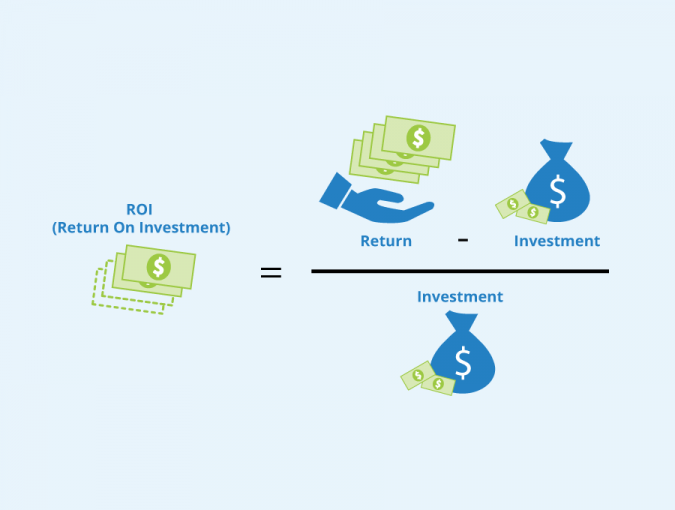Let's talk ROI and Innovations for Marketing Agencies
To stay competitive, the agencies have to allocate resources to enhance both the human and technological capabilities: educate the employees and the management and invest in the new software for internal use and clients' projects. In other words, the agencies have to become innovative in serving clients' needs.
Of all the challenges marketing agencies face, the core is to provide more than in-house marketing teams can handle. The opportunities range from building niche expertise with specific marketing tools and channels to employing a sophisticated Martech stack that allows running complex omnichannel campaigns.
To make ground and reasonable decisions on the matter, they need a clear understanding of ROI or return of investment: a rate indicating whether the money was spent right for the business.
What is ROI anyway?
Let's start from the basics. Return of investment is the ratio of the benefits to the investment cost. The formula is that simple:
ROI = (Gain of Investment) - (Cost of Investment) / (Cost of Investment)

The gain is essentially what you get from implementing a particular marketing tool. Depending on the kind of software, it can be calculated in a few different ways.
Some tools help boost sales, provide new services, or increase projects' scope, quality, and price. They all increase revenue, making the ROI easy to calculate. The others help implement more cost-effective work processes rather than immediately increase revenue. Finally, some tools mitigate the risks associated with adverse events. Their ROI should be calculated based on the chance and the scale of potential losses.
The cost of investment is pretty straightforward to calculate and includes all the money spent on purchasing and maintaining new tools, mastering them, and so on. As both gains and costs are distributed over time, ROI should be assessed about a certain period, let it be a project lifetime or a reporting period.
Innovations arrive at the marketing stack.
Speaking of innovation in the marketing business would be wrong to say that agencies can't live without new shiny instruments. Most production in marketing agencies is still done using pen and paper. But in research and analysis, new technologies are game-changers that speed up tasks dozens (and hundreds) of times. For instance, an average eCommerce company loses around 1.5% of conversion rate each year to unnoticed pitfalls within buyers' journey (a reader may do the calculations for his projects), but without CJM discovery automation, agencies struggle to locate issues and find points of growth, as it takes hundreds of hours of manual work. Digital marketing intelligence became a thing a while ago. Still, until recently, its potential was limited by the complexity and high price of marketing analysis tools that won't blossom without qualified (and well-paid) data scientists. The agencies hesitated to invest in data science, and the clients wouldn't pay for experiments. To change the marketing landscape, data analysis tools had to become affordable. That's what the new generation of digital marketing tools does. InsightArc is a good example: it enables automated customer journey mapping in real-time based just on the record of user events for a fraction of the price of traditional customer journey analytics.
ROI of marketing agencies' digital transformation.
When assessing the ROI of data science instruments like InsightArc, you should calculate both the direct outcome and the synergy with other business functions. Let's start with the gains.
- InsightArc allows gathering insights about customer journeys without prior integration and based on a relatively small amount of data. It will enable the sales reps to tailor business proposals to clients' needs and address actual pain points.
- InsightArc enables deep CX analysis within a website or an app and helps find problems that hurt conversion rates, allowing future improvements. It works automatically, performs 50 times faster than a human, and needs no expensive infrastructure deployment.
- InsightArc connects to data sources like Google Analytics and allows real-time monitoring during product launches, website redesigns, or other changes that may affect CX and reduce conversion rates. It enables marketers to find and fix the issues in time to improve the outcome of marketing campaigns.
- InsightArc automates customer journey mapping, saving dozens of hours and thousands of dollars on manual data analysis.
- Last but not least, InsightArc can be used both on clients' projects and agencies' resources with no extra cost, making it a "double-purpose" tool.
To summarize, the gains from InsightArc include (but ain't limited to) better sales and project management, more beneficial long-term projects, and significantly reduced data analysis costs.
The costs are surprisingly low, as InsightArc has a shallow learning curve and requires no advanced skills. The product pricing allows marketers to practice with a free basic plan or a full-featured trial before purchasing it. In other words, it's possible to sell clients advanced buyers' customer journey analysis before actually paying for it.
Understanding and fixing the problems behind conversion loss in customers' business is the actual marketer's performance indicator. When the competition for leads is harsh, every step of the customer journey matters, the marketers armed with powerful data analysis tools can save their clients millions of dollars.
Thus, InsightArc can become the basis for the digital transformation of marketing agencies. With the new data-driven services, it's a high-ROI, no-brainer investment that can take the agency to a higher league.
Hotel & Travel 2025-2026: Key Consumer Trends and Critical Gaps
Experience-first demand, short-form discovery, OTA pressure, affluent privacy, overtourism - and how to respond
AI Anti-Glossary for Customer Experience, Support & User-Centric Automations
A honest breakdown of 66 overused AI terms in Customer Experience, Support, and Automation - what they claim to mean vs. how they actually show up in practice.
AI Glossary for Customer Experience, Support & User-Centric Automations
Terms used by ecommerce and marketing and customer experience professionals who applied AI